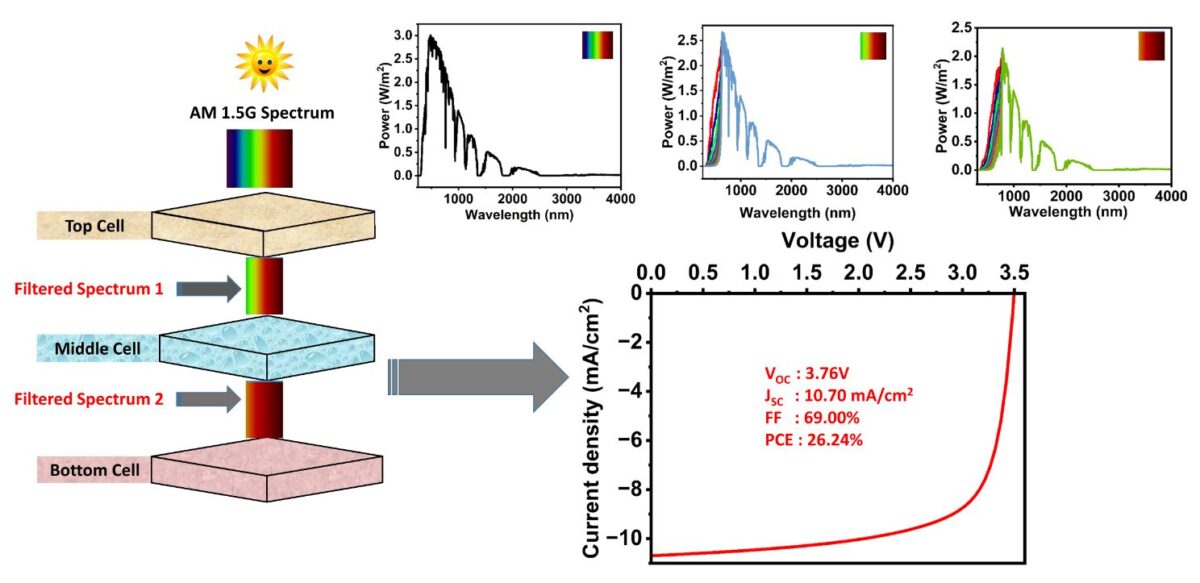A group of researchers led by the Technology Chitkara University in India has designed a three-junction all-perovskite tandem solar cell (3J-APTSC) that can reportedly achieve a power conversion efficiency of 26.24%.
All perovskite PV devices offer the advantage of effectively harnessing sunlight across a wide range of wavelengths. “By strategically applying two-step filtered spectrum and current matching techniques, our team has fully realized the capabilities of the three-junction tandem solar cell design,” the research’s corresponding author, Jaya Madan, told pv magazine.
The scientists used the SCAPS-1D solar cell capacitance software, developed by the University of Ghent, to simulate the novel cell configuration. “This device simulator is known for its reliability in modeling standalone and two-junction tandem solar cells. However, until now, there hasn’t been a method for simulating three-junction tandem solar cells using SCAPS-1D. Thus, our work fills this gap.”
The solar cell relies on a 287 nm-thick top cell comprising an electron transport layer (ETL) based on tin oxide (SnO2) and buckminsterfullerene (C60), a perovskite active layer with a bandgap of 1.99 eV, and a hole transport layer (HTL) made of methyl-substituted carbazole (Me-4PACz).
Moving down the tandem structure, the 500 nm-thick middle cell features a perovskite absorber layer with a bandgap of 1.6 eV. The top and bottom subcells are interconnected through an indium tin oxide (ITO) layer, facilitating efficient charge transport between the layers. The 670 nm-thick subcell integrates a perovskite absorber with a bandgap of 1.20 eV.
The performance of the cell was simulated under standard illumination conditions and, according to the scientists, it achieved remarkable photovoltaic parameters. The device reached an efficiency of 26.24%, an open-circuit voltage of 3.76 V, a short-circuit density of 10.70 mA/cm², and a fill factor of 69.00%.
The researchers explained that the precise determination of the filtered spectrum and the current matching points played a crucial role in the cell optimization.
The novel cell concept was described in the study “Design and simulation of three-junction all perovskite tandem solar cells: A path to enhanced photovoltaic performance,” published in Materials Letters.
This content is protected by copyright and may not be reused. If you want to cooperate with us and would like to reuse some of our content, please contact: editors@pv-magazine.com.









By submitting this form you agree to pv magazine using your data for the purposes of publishing your comment.
Your personal data will only be disclosed or otherwise transmitted to third parties for the purposes of spam filtering or if this is necessary for technical maintenance of the website. Any other transfer to third parties will not take place unless this is justified on the basis of applicable data protection regulations or if pv magazine is legally obliged to do so.
You may revoke this consent at any time with effect for the future, in which case your personal data will be deleted immediately. Otherwise, your data will be deleted if pv magazine has processed your request or the purpose of data storage is fulfilled.
Further information on data privacy can be found in our Data Protection Policy.